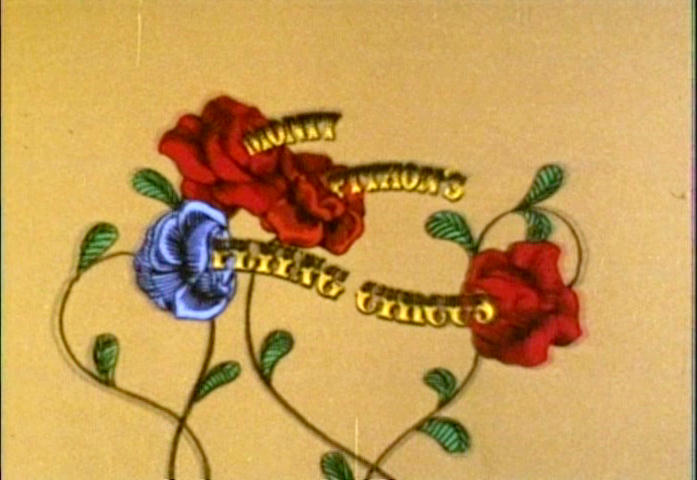NiroZ asked me if I had any tips for puzzlemakers. Insofar as I still need to answer a PM from noma about the April contest, no one should be surprised that I failed to get back to him. (Part of the problem is that my answer was starting to become a term paper.)
But if you'll permit me a few words, here are some thoughts. (Credentials: winner of the aforementioned Hermetic Puzzles contest; creator of the critically acclaimed
* "
not dr0d 2: DROD Tower"
; author of several MIT Mystery Hunt puzzles; etc.)
*Well, noma seemed to like it.
---
First, the fundamental fact of puzzles: A puzzle is a contest between the author and the solver. Ideally, the author wants to lose.
That may seem strange. But an unsolveable puzzle isn't any fun. What you want, as a constructor, is to present something that the solver will find challenging
but possible. You're not the Sphinx facing Oedipus; you're not Bilbo Baggins facing Gollum; your life doesn't depend on beating the solver.
Now then...
1. Always keep your audience in mind. Are they experienced solvers? Do they have a common base of knowledge they can draw on? Basically, a chemistry-themed puzzle will be very different whether it's aimed at sixth graders or CalTech seniors.
2. Difficulty can be adjusted; adjust it as necessary. My favorite illustration of this is the following four clues:
Bridge location
Oliver from the '80s
Word before Dakota or Carolina
Opposite of south
All four can be used to clue NORTH (positions in a bridge game are named for the cardinal directions), but with decreasing difficulty. (Of course, I could illustrate the same point by referring to the three different difficulty levels of the "
Odd Jobs"
holds.) The upshot is this:
any puzzle can be made easier or harder by changing the amount of information you give the solver. Tweak your puzzle until it's the right level of difficulty. Which leads me to...
3. Don't forget to testsolve if at all possible. You do it for holds; do it for puzzles, too. Sometimes a step you think is obvious will turn out to be hard for solvers to see; sometimes a clue that's intended to be hard will turn out to be really easy. I'm going through this right now, in fact, with a British-style crossword I've written: I have a clue I thought was really clever, but all of my solvers have said they just had to guess at the answer because they couldn't figure it out. (3b:
listen to your testers! No matter how much I like the clue I wrote, I need to admit that people can't solve it, which means it has to change. See the fundamental fact, above.)
Testing can also help you avoid red herrings, approaches that seem correct but lead nowhere, which leads me to:
4. Eliminate red herrings. Suppose I present a puzzle in which I want the solver to get the word CASH, so I give the words CONDUIT, ASCENSION, SHAPES, HUMBUG, figuring the solver will just take the first letter of each one. Nice short puzzle; but I give it to a tester, who says, "
Well, they're all episode titles from
The X-Files, so I've been reading plot summaries for the last hour."
That was a huge red herring, and any time a solver spends pursuing that connection will be entirely wasted. Solvers hate that. Testing can help you find unintentional red herrings. As for intentional ones: leave them out.
5. Real puzzles aren't guessing games. In a good puzzle, when a solver gets to the answer, she knows it. I saw a puzzle once that led to the phrase "
KIA MODEL"
, and the solver was then supposed to guess every model of Kia until he hit the right one. That's irritating; and in something like this, where you may not get your answer confirmed, it's downright terrible.
There are some corollaries to this. For instance, the right approach to the puzzle shouldn't be a guessing game, either. I worked on writing the 2003 MIT Mystery Hunt (a weekend-long puzzle solving event), and a friend who'd written the 1999 Hunt still regretted a puzzle with this problem. Essentially, there was a right thing to do, and it got you the answer, and it was entirely reasonable. Unfortunately, it wasn't obvious that it was right; and there were dozens, perhaps scores, of other equally reasonable things you could do that, of course, got you nowhere. That becomes like a guessing game for the solver: "
Should I read the first letters? No. Second letters? Third? What if I alphabetize them first? Sort by length? By how often they occur in Hamlet? ..."
Part of the key here is to either (a) use something immediately salient (e.g., the first letters of the words) or (b) make it obvious that there's some other salient fact that can be used (e.g., put in the instructions, "
I wonder how many times each word appears in Hamlet?"
).
---
There are a whole lot of other things I could add, which is why this nearly became the length of a term paper. Feel free to contact me if you want more advice on what makes a puzzle "
good"
or "
bad"
.
Also, of course, you should be able by now to answer the following question:
What DROD element am I thinking of? No guessing necessary; the clues are right here. (After all, what kind of advice on puzzles doesn't include a puzzle?)









